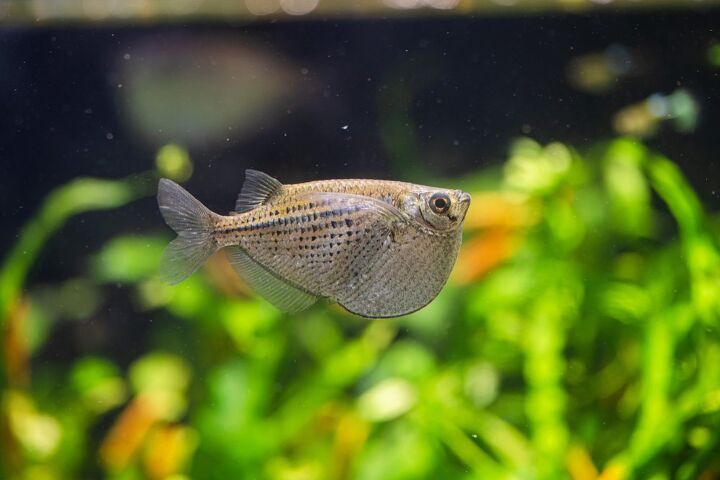Hatchetfish


About Hatchetfish
Freshwater hatchetfish are a type of ray-finned fishes belonging to the family Gasteropelecidae. These fish are divided into three genera with a total of nine different species with the Common Hatchetfish (Gasteropelecus sternicla) being the most common. In general, they are peaceful schooling fish that can be kept in community tanks with other community species. Though these fish can get along with other peaceful species, males of the same species sometimes have trouble getting along.
Freshwater hatchetfish are a type of ray-finned fishes belonging to the family Gasteropelecidae.
All freshwater hatchetfish come from South America and Panama where they tend to inhabit the upper level of the water column, swimming just below the surface.
Hatchetfish are named for the unique, hatchet-like shape of their bodies – these fish also have large pectoral fins which enable them to jump out of the water to catch insects. Different species exhibit different colorations with colors ranging from black, gray, silver and brown to brighter colors like red, orange, and green. Several species have a striped or marbled pattern.
Hatchetfish are a moderately hardy group of fishes that is best for experienced or intermediate-level aquarium hobbyists. Though these fish can adapt to a range of water conditions, they are highly susceptible to Ich and they have a tendency to jump so they need a covered tank. These fish come from a tropical or semi-tropical environment so they require a tank temperature in the 72°F to 82°F range with a pH between 5.5 and 7.5 and a water hardness in the 2 to 15 dGH range. In terms of habitat, these fish prefer clean water with some floating plants but plenty of room to swim at the surface of the water.
This is a moderately hardy group of fishes that is best for experienced or intermediate-level aquarium hobbyists.
Freshwater hatchetfish are carnivores by nature, feeding on insects and crustaceans in their natural habitat. These fish are particularly well adapted to eating small insects from the surface of the water since their mouths are located on the top of their bodies. In the home aquarium, they should be fed a diet of carnivore flakes, pellets or granules as well as live and frozen foods.
Also read: Fast-Growing Aquarium Plants for Planted Tanks
There are very few physical differences between male and female, so sexing these fish is difficult. They are egg layers but some species like the Common Hatchetfish are very difficult to breed in the home aquarium. The Marbled Hatchetfish, on the other hand, breeds quite readily in the home aquarium.
There are nine species of freshwater hatchetfish from three genera: Carnegiella, Gasteropelecus, and Thoracocharax.
- Blackwing Hatchetfishes (Carnegiella marthae)
- Pygmy Hatchetfishes (Carnegiella myersi)
- Dwarf Hatchetfishes (Carnegiella schereri)
- Marbled Hatchetfishes (Carnegiella strigata)
- Silver Hatchetfishes (Gasteropelecus levis)
- Spotted Hatchetfishes (Gasteropelecus maculatus)
- River Hatchetfishes (Gasteropelecus sternicla)
- Giant Hatchetfishes (Thoracocharax securis)
- Spotfin Hatchetfishes (Thoracocharax stellatus)
Photo credit: chonlasub woravichan/Shutterstock; Besjunior/Shutterstock

Kate Barrington is the loving owner of two cats (Bagel and Munchkin) and a noisy herd of guinea pigs. Having grown up with golden retrievers, Kate has a great deal of experience with dogs but labels herself a lover of all pets. Having received a Bachelor's degree in English, Kate has combined her love for pets and her passion for writing to create her own freelance writing business, specializing in the pet niche.
More by Kate Barrington
























